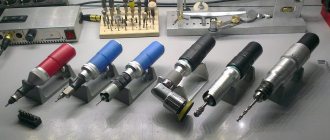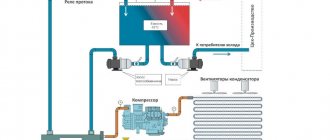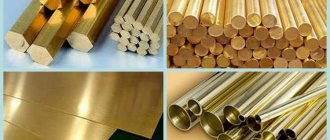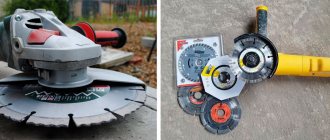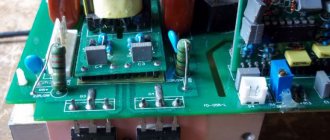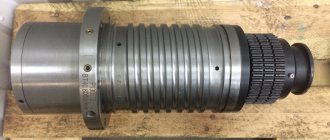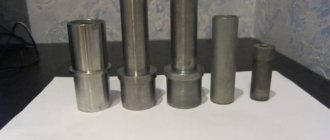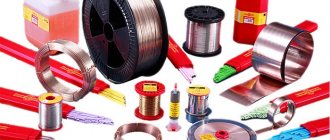The ring cutting method is used in cases where it is necessary to obtain a hole of a certain size in some material. A ring attachment that fits onto a drill, or a wood bit, is a device used by craftsmen for drilling in wood.
What is a wood crown?
A spray-coated attachment for processing plywood, chipboard, plastic, metal - a well-known device called a crown for drilling wood and other materials. It looks like a bowl with teeth located along the edge of the rim. It is put on a special drill chuck and rotates thanks to the power tool. The depth of the hole can vary, from a few millimeters to several centimeters. The number of teeth on it depends on the diameter of the cutter: the larger the wood crown, the greater the number of teeth on it. A typical set of ring nozzle is equipped with the following elements:
- head with cutting teeth;
- shank;
- central drill.
Why do you need a wood crown?
A ring attachment for a drill, with which you can easily drill a hole of any diameter, is widely used in repair work. A well-sharpened professional wood crown for socket boxes allows you to get neat recesses in walls, drywall, and wooden structures of the required size. A clean cut with a smooth inner surface without chips or burrs can be made using this attachment. There is no need to center the surface before drilling; sawing occurs quickly and quietly.
Is it possible to drill into metal with a wood crown?
A core drill does an excellent job of its main task - drilling holes. Experts confirm that it can be used to process not only wood. A crown for holes in wood, made of special grades of coated steel, is capable of processing more durable materials. With its help it is easy and simple to make a hole in non-ferrous metals of any hardness. When planning to work with complex materials, you should choose a drill with HCS markings; such a crown for hard wood and metal can easily cope with any task.
Equipment and accessories for drilling
A tool for drilling holes has been developed for each stage. At the preparatory stage, the following tools are used to accurately mark the location of the future hole. To do this, use: a core, a special template or a jig. The core is a well-sharpened rod made of durable tool steel. With its help, a depression is made on the surface of the workpiece, at the point where it is planned to drill. Once in this recess, the drill does not slip on the surface and accurate drilling is performed.
To increase productivity, mass production plants make special templates. They allow you to mark the locations of future holes in workpieces of the same type. Special templates are used for drilling on cylindrical surfaces. They are made from a steel strip bent at a right angle. A small hole is drilled on one of the surfaces, which will later allow a core to make a mark on the cylindrical surface.
To obtain increased marking accuracy, maintain the vertical position of the drill and maintain the specified distance, a tool called a jig is used between the holes. In addition, it is used when drilling thin-walled products for which strong mechanical impact is not possible (for example, hitting a core with a hammer).
In addition to these products, tools and devices are used that allow drilling with a drill with its rigid fixation. For this purpose I use:
- guide clamp;
- holding stand;
- jig to direct the movement of the drill.
The first two devices are made for a specific electric drill design. The jig allows you to accurately guide the drill to the location of the future hole. It is successfully used for sizes not exceeding 20 millimeters. Therefore, when making large-diameter holes using a jig, preliminary drilling is performed.
All these problems are easily solved by using drilling or lathes. Drilling machines are divided into three categories:
- universal;
- specialized;
- special.
They are classified according to the following criteria:
- table design;
- level of automation;
- number of available spindles;
- degree of accuracy;
- availability of additional features.
The first category of machines allows you to solve almost the entire range of problems in the production of holes. A serious limitation is the permissible distance over which the chuck with a fixed drill can move. This circumstance does not allow drilling to great depths. In this case, specialized machines are used. To increase labor productivity and increase the number of similar parts produced, special units are designed. They are able to perform a list of necessary operations with high accuracy and speed.
By design, such machines are available with one or more spindles. The design of the table is varied: regular, floating, lifting and others. The level of automation is determined by the way drilling operations are performed. The simplest machines are manual and mechanical. Automatic and numerically controlled machines are more advanced.
In addition to drilling machines, various lathes are used to solve these problems.
On lathes you can perform the entire list of operations related to making holes: drilling itself, drilling followed by reaming or countersinking.
What is better: a wood crown or a ballerina?
Disputes continue in the furniture-making community about which tool to give preference to: a hole cutter or a ballerina jig. This wood core drill cuts a hole thanks to two sharply sharpened plates. By adjusting the distance between them, you can get a recess of any size. The main difference between the devices is that the crowns have a fixed size, and with the help of a ballerina you can drill a hole of any diameter. There is no definite answer which is better, it all depends on the specific type of work. When carving wood, a ballerina is best, and it is more convenient to drill holes in ceramics with a coated crown.
Preparatory operations for work
It must be taken into account that to prevent rotation, manufacturers create an irregularly shaped socket for fitting the tool. More experienced specialists remind you that for high-quality fixation it is necessary to tighten the thrust nut or bolt well. This will allow the cutting tool to be securely held in the grooves and not to become loose, deforming and bending the hole.
Example of the resulting hole
It is necessary to install the tool into the drill chuck only after all threads have been tightened. Then you can start drilling at the selected point. The process is practically no different from working with a classic drill. It is important during the operation to maintain maximum perpendicularity to the axis of rotation of the plane being treated. This factor is maintained in the first millimeters, then everything goes along the initially formed cylinder.
The number of revolutions for rotating the crown is also set in advance. It is worth considering that an increase in the diameter of a tool is combined with an increase in its vibration. This forces the use of more powerful drills if you take wood drills for large holes and large diameters. If possible, attach an additional handle to support and maintain perpendicularity.
When setting the rotation speed on a drill, you need to follow these rules:
- soft wood can be processed at speeds from 1000 (diameter 3.0-5.0 cm) to 2400 rpm (diameter 10-55 mm);
- for hard wood, it is advisable to increase the speed to 250 rpm (3.0-5.0 cm) to 600 rpm (1.0-1.5 cm);
- When using bits with carbide tips, you cannot lower the speed below 400-500 rpm, as the cutting edge will crumble.
VIDEO: How to drill a large diameter hole
How to choose a crown for wood?
Crowns designed for working with wood are easy to distinguish from others. They are painted black and made from metal alloys. A set of wood crowns looks like a device consisting of several cutting blades that can be replaced. Unlike a fixed cutter, such a tool does not always produce a high-quality cut. The harder the surface that needs to be drilled, the lower the drill speed should be. A wood inlaid crown differs in performance, which depends on several parameters:
- cutter material;
- tooth sharpening forms;
- number of teeth.
Wood crown sizes
The standard size of the socket box is 6.8 cm. Any set of ring cutters has a suitable attachment. In addition to this, many craftsmen use large-diameter wood crowns to drill a variety of technological and decorative holes. The size of the shank depends on the size of the device itself; for holes less than 65 mm in diameter it is recommended to use a shank of about 19 mm, for large recesses - from 3 cm. The following sizes of crowns are considered the most popular:
- 20 mm;
- 65 mm;
- 100 mm;
- 110 mm;
- 120 mm;
- 127 mm;
- 130 mm;
- 150 mm.
Distinctive features
Regardless of what material the crown purchased from Leroy Merlin will be used for, it has a standard design like all the others. It consists of the following elements:
- cutting head;
- elongated cylindrical or ribbed shank;
- guide drill.
The kit can be supplemented with a hexagon for high-quality clamping of a core drill.
Manufacturers offer two design options for wood crowns for deep drilling:
- non-separable solid metal structure for making a hole of the same size, for example, wood diameter 120 mm
Structure of a non-separable drill
- a collapsible design, which consists of a holder with a shank, to which a cutting ring of the required diameter is attached; for all mounted crowns there is a table in the instructions for use.
A stacked hole saw consists of several removable links of different diameters
In the first option, a solid ring is used, and in the second, an open ring in the form of a split cylinder is used. Quick ring changes speed up any machining process. Each cutting element has special technological holes for removing chips. They are made in the form of circles or slots on the side surfaces of the cylinders for small diameter tools and additionally at the ends for large ones.
Some craftsmen independently make a wood crown in their workshops, using a thick-walled metal pipe of the selected diameter.
Wood crowns - ranking of the best
Ready-made sets of ring drills are reliable and safe. The TOP of the best models of adjustable crowns for wood is as follows.
- The drilling set “Bison 29554-H15_z01”
consists of 15 items, the diameter of the bits varies from 1.9 to 12.7 mm. The centering drill is made of durable HSS steel. The set copes with different types of materials - wood, plastic, chipboard, plasterboard. - “MATRIX 70472”
– bimetallic wood crowns made of carbon steel, in a convenient case for storage and carrying. The set is completed with two holders and a centering drill, the maximum diameter of the bit is 2.8 mm. - “Bosch 2609255634”
- the model is compatible with any type of drill. The diameter of the holes that can be drilled using drills is from 46 to 81 mm. The wood bit provides a drilling depth of up to 3.1 cm, the weight of the set is only 500 g.
Distinctive features
Regardless of what material the crown purchased from Leroy Merlin will be used for, it has a standard design like all the others. It consists of the following elements:
- cutting head;
- elongated cylindrical or ribbed shank;
- guide drill.
The kit can be supplemented with a hexagon for high-quality clamping of a core drill.
Manufacturers offer two design options for wood crowns for deep drilling:
- non-separable solid metal structure for making a hole of the same size, for example, wood diameter 120 mm
Structure of a non-separable drill
- a collapsible design, which consists of a holder with a shank, to which a cutting ring of the required diameter is attached; for all mounted crowns there is a table in the instructions for use.
A stacked hole saw consists of several removable links of different diameters
In the first option, a solid ring is used, and in the second, an open ring in the form of a split cylinder is used. Quick ring changes speed up any machining process. Each cutting element has special technological holes for removing chips. They are made in the form of circles or slots on the side surfaces of the cylinders for small diameter tools and additionally at the ends for large ones.
Some craftsmen independently make a wood crown in their workshops, using a thick-walled metal pipe of the selected diameter.
DIY wood crown
Any craftsman may encounter a situation where a drill of a suitable diameter is not at hand. For work that does not require high precision and accuracy, you can make a wood crown for a rosette yourself in a couple of hours. The list of materials is minimal: a metal pipe of the required diameter, a “fist” from a door hinge, a drill, a screw, a rectangular steel plate.
- In the “fist”, using a vice, you need to drill a hole corresponding to the diameter of the drill.
- On the side of the “fist”, at a distance of at least 1 cm from the edge, another threaded hole should be made, intended for a fixing screw.
- Using a grinder, you need to make cuts along the edge of the pipe that imitate teeth.
- Weld a plate on the back of the pipe, in the center of which make a hole for the drill.
- To assemble the structure, a drill is inserted into the “fist” and secured with a screw. The lower part of the drill is placed in the crown, and the upper part is placed in the tool chuck (drill or screwdriver).
Household drill bits for drilling square holes
To drill square holes at home, you can purchase a special drill with an overhead frame. Drills with such frames are called household drills, since they are intended directly for drilling openings with a drill or hammer drill, that is, household power tools.
The frame is a mandrel that prevents random movement of the drill. The drill is connected to the chuck using a cardan transmission, which eliminates the increase in the load on the tool chuck. The size of the frame indicates the depth of the resulting hole, so the larger the internal hole of the mandrel, the larger the square shape. The frame is connected to the body of the drill or hammer drill using a special steel clamp.
This is interesting!
For the manufacture of the cutters in question, U8 grade steel is used, which is hardened to a hardness of 52-56 HRC. To work with high-strength materials, X12 alloy steel is used, which undergoes heat treatment and is hardened to 56-60 HRC.
In conclusion, it is worth noting that if there is a need to obtain a square hole in the workpiece, then this can be done without the use of special cutters. Ordinary drills and a file will help in this matter. However, if the question arises about the need for frequent drilling of large quantities of square holes, then only a special attachment fixed in the tool chuck will help.
Publications on the topic
Drill bit for concrete drill design, selection and tips for use
Diamond blades for grinders and criteria for their selection
All about metal cutters - types, purpose and application
Technical characteristics of cutting wheels for metal
How to use wood crowns?
A core drill has the shape of a cylinder, one edge of which is made in the form of sharp teeth, and the other has a tip. A wood bit for a drill is essentially an attachment that can complement any hand tool. The cutter must be installed in a special glass and secured with a nut. The drill, which is located in the very center of the crown, is designed to determine the exact location of the center of the hole and obtain a perfect cut. If you follow the operating rules, any tools, including core drills, will last a long time.
Alternative Methods for Making Square Holes
The production of radius arcs leads to a significant decrease in the quality of the resulting product. That is why the possibility of using other methods for obtaining a square hole is often considered:
- Laser systems are widely used today. They can be used for processing along a given trajectory; when the beam is focused, the metal is heated, due to which the required surface is formed.
- The stamping method has been used for a long period. It involves the use of special equipment that is capable of exerting high pressure on sheet and other workpieces. The disadvantage of this method is the high cost of the equipment, as well as the possibility of obtaining only shallow recesses.
- When using gas welding, it is also possible to form a rectangular shape. However, this technology is characterized by low practicality in application, and the resulting products are of low quality.
https://youtube.com/watch?v=60WbTPNFT-8
There are special sets of punches on sale that can also be used in this case. The kit is represented by a combination of the following elements:
- Bushing for guiding the punch.
- Special holder.
- Ring travel stop.
- Matrix.
Set of punches
In order to place a high load on the working tool, a hydraulic jack is used. This technology is characterized by the fact that the resulting figure has clean and even edges, that is, additional mechanical processing is not required to improve the quality of the surfaces.
How to sharpen a wood crown?
With active use, drills can become worn down and require sharpening. You can restore the sharpness of a wood drill bit yourself, but this will require certain skills. Maintaining the sharpening angle is an important point, without which it will not be possible to properly restore the functionality of the drill. Core drills for wood are made of soft metals, and they can be restored using hand tools and tools, for this the following are used:
- Grinder with a special grinding disc.
- Hand drill with sandpaper disc.
- Sharpener or emery machine.
Drilling modes
To obtain accurate and high-quality holes, it is necessary to comply with the modes and technologies of all operations. Drilling metal requires compliance with the following modes:
- selection of the required diameter and type of drill;
- cutting speed and depth;
- feed speed and accuracy (drill or workpiece);
- contact angle of the cutting surface with the workpiece;
- heating temperature of the workpiece and drill (providing cooling, if necessary).
The implementation of all modes allows you to obtain a hole in the metal that satisfies the conditions of the design documentation. Correctly selected mode increases processing accuracy and extends the service life of the cutting tool. Special tables have been developed for selecting drilling modes for metal products. They include precise parameters of cutting conditions. For example, knowing the steel grade and the diameter of the drill used, you can use the conversion table data to set the cutting speed. This will allow you to accurately adjust the spindle speed of the machine used. To do this, use a conversion table, which is applied to a special plate and fixed to the front panel of each machine.
In some cases, preliminary drilling is used. It prepares the rough hole for further processing (milling or reaming). If the workpiece is thick enough or it is necessary to obtain a deep hole, a step-by-step manufacturing mode is used.
